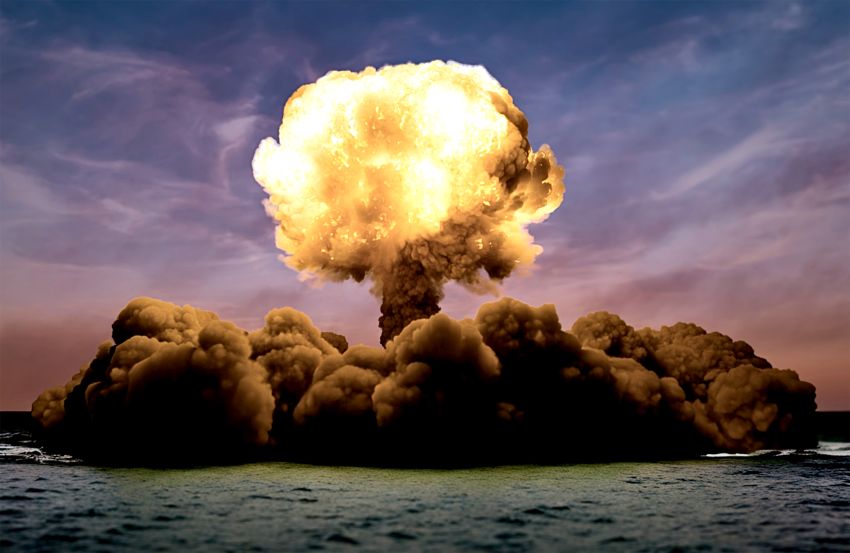
Now that all the hoopla regarding Christopher Nolan’s film Oppenheimer has died down, we can focus on the serious ethical and science issues raised by the Manhattan project — the US effort to build a nuclear bomb.
Examining the social impact of the Manhattan project is required, but not enough. The release of the movie, and its popularity, does provide an opportunity to discuss the ethical responsibility of scientists — a topic which receives scant attention.
As a group, scientists must take into account the social and ethical consequences of their research, as the current debate around AI demonstrates.
The ferocious debates surrounding vaccines, the ugly tactics of the anti-vaxxer groups, the fear-mongering surrounding the use of AI and ChatGPT, all highlight a serious deficiency of our times.
The capitalist business model has prioritised technology as a commodity, ready to be sold in mass quantities.
We have ignored the ethical consequences of technology, and failed to ask for whose benefit scientific innovations are developed and deployed.
The Manhattan project specifically revealed two interconnected features of scientific work: the major impact the sciences had on the wider society, particularly military technology and it revealed that scientific work can be moulded by big project funding.
Major dollar amounts — in this case from the US government — undergirded a massive intertwined effort by physicists, engineers, technicians and workers from various industries.
Indeed, the Manhattan project, far from being the product of a few heavy duty formulas derived by physicists (important as they were) marked the beginning of the military-industrial complex.
It took a project on the scale of Manhattan to make us realise that science is not something of concern to scientists only. Indeed, scientists such as Oppenheimer realised that their work has consequences for the wider society. He was definitely not the only physicist to recognisable the social and ethical implications of their work.
Years before Oppenheimer became a household name, Hungarian-born and Jewish refugee physicist Leo Szilard (1898–1964) emphatically opposed the deployment of nuclear weapons, even though his scientific work led directly to the Manhattan project.
Szilard spoke out against using the atomic bomb and advised US government military authorities to organise a technical demonstration of the bomb on an uninhabited target, as a way of providing a preview to the rulers of Imperial Japan. His suggestion was ignored.
Joseph Rotblat (1908–2005), a Polish-born British physicist who worked on the Manhattan Project briefly, resigned in protest after discovering its military objectives, and campaigned against nuclear weapons for the rest of his life. He was awarded the Nobel Peace Prize in 1995.
Oppenheimer has become the archetype of the morally tragic figure.
A committed scientist, he threw himself wholeheartedly into the Manhattan Project, only to recoil at the horrific destruction wrought by his nuclear creation. He was hounded out of the military-scientific community in the McCarthyite atmosphere in the immediate post-war period.
But, setting aside his personal emotional and moral turmoil, he still accepted the atomic bombings of Hiroshima and Nagasaki, thus making him a war criminal, albeit a morally conflicted one.
Numerous scientists involved in the Manhattan Project understood their obligations to inform the civilian authorities of the moral implications of their work. Many were refugees from Europe, and had dealt with the ethical responsibilities of weapons’ research. Sensitivities to the moral considerations of their work, they were rebuffed by an increasingly aggressive domestic military industrial complex.
As has been demonstrated by historians and scholars of the period, the atomic bombings of Japan were completely unnecessary and unjustified from a military point of view.
It was the entry of the Soviet Union in the Eastern theatre of war that convinced the Imperial Japanese government to surrender.
The US had been intercepting Japanese government communications, where Tokyo officials were discussing various options of surrender. American government documents from the time reveal that they knew the atomic bombings were not the decisive factor in persuading Tokyo’s ruling circles to surrender.
Did Oppenheimer ever consider the fact that Nagasaki, the second Japanese city to suffer nuclear annihilation, was a sanctuary city for Japanese Christians? Japanese Catholics who felt marginalised or discriminated against found refuge in Nagasaki prior to 1945.
Did Oppenheimer and the US authorities realise that they condemned to death thousands of Christians, a religion America’s rulers professed to observe?
Did Oppenheimer ever consider the fate of the first victims of radioactivity, the residents of the New Mexico community directly impacted by the very first nuclear weapons test in July 1945?
The people of Tularosa Basin, New Mexico, suffered the immediate as well as long-term effects of the atomic bomb testing.
In the decades after 1945, Tularosa residents have been experiencing higher than average levels of cancer. To paraphrase one resident, it is not a matter of if you will get cancer, but when and what type.
This is not a denunciation of scientific research, or scientists, or the scientific method.
It is rather an examination of an area that does not receive enough attention.
As genomic companies aggregate our DNA, as scientists consider whether to revive extinct species, (de-extinction to use the term for a proposal to restore the thylacine Tasmanian Tiger), or AI researchers in their quest for what they define as “consciousness”, the obligations to humanity must be paramount in our considerations, not the relentless pursuit of corporate profit.
[Rupen Savoulian blogs at Antipodean Atheist, where this article was first published.]